Philadelphia
In Philadelphia, temporarily banning cars has become a new economic driver
The city’s Open Streets program has become successful and popular enough that key figures are looking into how to make permanent road closures a reality.
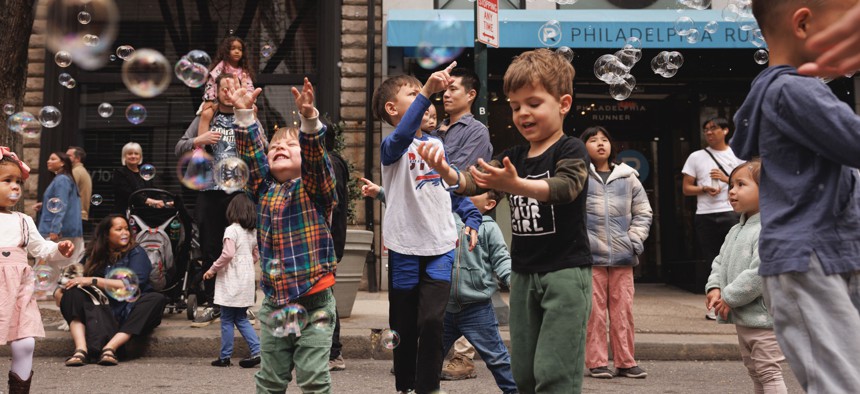
Children play on a Philadelphia street closed down as part of Center City District’s Open Streets initiative. Center City District
You don’t have to be anti-car to be pro-Open Streets.
Open Streets initiatives – where city thoroughfares are closed off to vehicular traffic in favor of family-friendly foot traffic – have proven to be wildly successful in cities around the world. Now in its second year, Philadelphia’s version of the program has already expanded – and its success has led many, including politicians, to wonder if there’s a path to permanent pedestrian thoroughfares in Center City.
“I think that it’s been very popular amongst the people who live in the city and the businesses alike, which is not always the case,” City Councilmember Mark Squilla, who represents parts of Center City, told City & State. “How often can we do it and how sustainable would it be – to make sure the businesses can thrive and the surrounding community is not negatively impacted – if it’s done more often than just periodically?”
Without cars in the streets, pedestrians can not only feel safer walking or biking around the neighborhood, but they can also get up close and personal with businesses and vendors, which many see as a win-win for the people and places involved.
And with street safety and security costs covered by the city or community development organizations, Open Streets seems to have the right of way forward.
Grand opening
Pedestrian-only street closures aren’t a new concept – Seattle held the first such event in the U.S. in 1968 – but in Philadelphia, the Open Streets program has been around less than a year.
The Center City District, which focuses on maintaining and promoting Center City Philadelphia, launched its Open Streets initiative in September 2024, closing the street to vehicles along Walnut and 18th streets near the city’s Rittenhouse Square. With vehicular traffic banned for the duration of the event, restaurants and retailers were able to expand outdoor dining and host pop-up vendors on the sidewalks.
Results were impressive: CCD survey data found that nearly 90% of businesses reported an increase in foot traffic to their storefronts, with some businesses saying they saw as much as 300% more foot traffic compared to an average Sunday.
The program has continued and expanded since, with Rittenhouse Row getting two Open Streets in December 2024 to promote holiday shopping.
In 2025, Rittenhouse saw another boost from Open Street Sundays in April, and the city’s Midtown Village neighborhood – a new addition to the CCD program – got its street closures in June, coinciding with the start of summer and Pride Month.
In addition to pedestrian-only thoroughfares, the street closures create more public space and more age-agnostic activities for tourists and residents alike to spend time in Center City without having to worry about vehicular traffic.
And with Open Streets typically prohibiting supplemental vendors on the street, the event puts the area’s businesses on full display.
According to CCD, the second year of Open Streets has built on the success of 2024: Preliminary data from the spring season shows that average pedestrian volumes are up 20% compared to Sundays in April 2024, while overall visitation to the larger Rittenhouse Row corridor was 8% higher compared to the same timeframe last year.
Center City District CEO Prema Katari Gupta told City & State that the city’s walkability plays a critical role in attracting people from all walks of life.
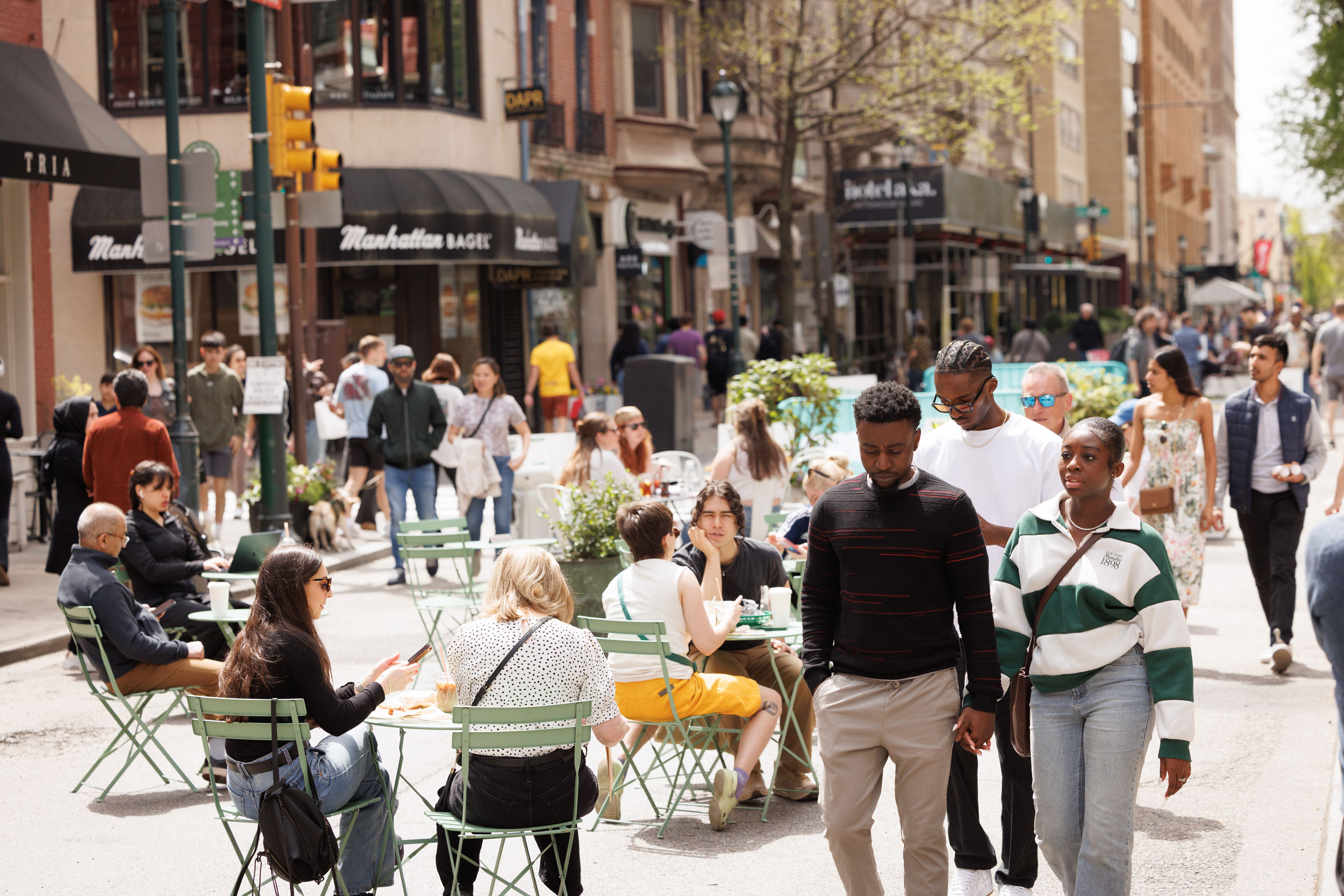
“Philadelphia is perennially on the list of most walkable cities in the United States,” Gupta said, referring to USA Today’s Reader’s Choice list of such cities, which had Philadelphia at the top for the third year in a row.
“It’s also something that we don’t want to take for granted,” Gupta said. “We drew inspiration, quite honestly, from a lot of European and Latin American cities where, frankly, the great shopping streets are pedestrianized.”
Yadan Luo, a lecturer at the University of Pennsylvania Weitzman School of Design who researches open and flexible spaces – streets designed to adapt to facilitate different uses – said pedestrian-friendly blocks attract families with children at a dramatically higher rate than streets with car traffic.
“Overall, the percentage (of foot traffic during Open Streets) is bumping up about 20% and the number of kids is bumping up significantly,” Luo continued. “When it’s a normal street, during a 50-minute period, we saw just five kids. When the street closed down, we saw (at least) 40 kids using the same places. It’s a huge bump.”
Retail response
Ben Fileccia, senior vice president of strategy and engagement with the Pennsylvania Restaurant & Lodging Association, told City & State that feedback from PRLA members confirms that the initiative is helping businesses boom.
“It activates these streets,” he said. “It becomes a real community event.”
June’s Open Streets expansion, in the Midtown Village neighborhood also known as the Gayborhood, was the program’s most recent successful iteration.
“Midtown Village Open Streets was just amazing,” City Councilmember Rue Landau told City & State. “(There were) musicians, magicians, photographers, muralists, Double Dutch, bands – everything.”
“We have parks in neighborhoods, but (Open Streets) get you all the family fun at one time,” Landau said. “We can only ask the question: Why not? Why not do more Open Streets?”
Path to permanent closures
When it comes to determining how to implement the Open Streets concept on a more permanent basis, Philadelphia could learn a few things from the Big Apple.
New York City has put forward a $30 million commitment to expand public space resources like plazas and Open Streets, with a focus on underserved communities.
Luo, citing places like Times Square, which famously closed Broadway from 42nd to 47th Street to vehicular traffic beginning in 2009, said if permanent closures aren’t right for an area, flexible streets could be the future of the movement.
Restricting vehicular traffic could allow for “flexible usage based on the time and the needs,” Luo told City & State, adding that streets “always have empty moments, when there are no cars or very few cars using certain streets. Meanwhile, people cannot use that. That’s not a very efficient way to use the street, especially considering (that cars can take up) 30% of the space in cities.”
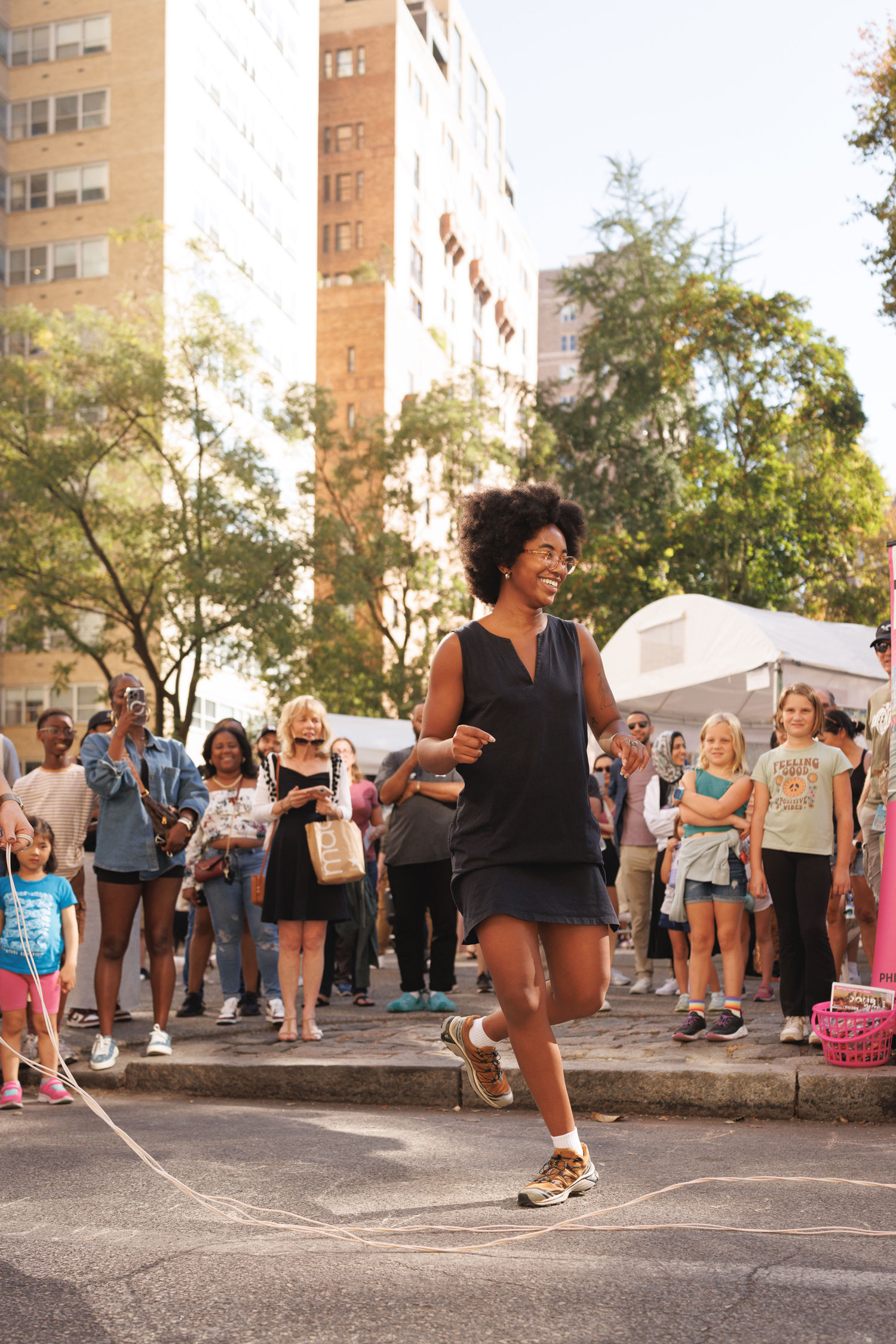
Landau, who has positioned herself at the forefront of the Open Streets and outdoor dining push, said conversations about further expansion of the program are already underway.
“We’ve entered into many conversations to identify how we can make more (Open Streets events) possible, not just in Center City, but in more neighborhoods throughout the city,” she told City & State. “Outdoor dining is the perfect connector to making that happen.”
Safety tops the list of potential concerns, including questions about how the streets are blocked off from traffic and who’s monitoring the events.
Fileccia said that the “bigger challenges” facing Open Streets include the bureaucracy related to possible expansion and the corresponding security costs.
“There’s the permitting process, the red tape and the extra expense when it comes to the police force,” he said.
Some street closures have relied on police or trash trucks to block off the road – something Gupta said doesn’t necessarily go with the clean, family-friendly aesthetic many hope for. The initiatives have also utilized meridian barriers that can be installed to deter vehicular terrorist attacks.
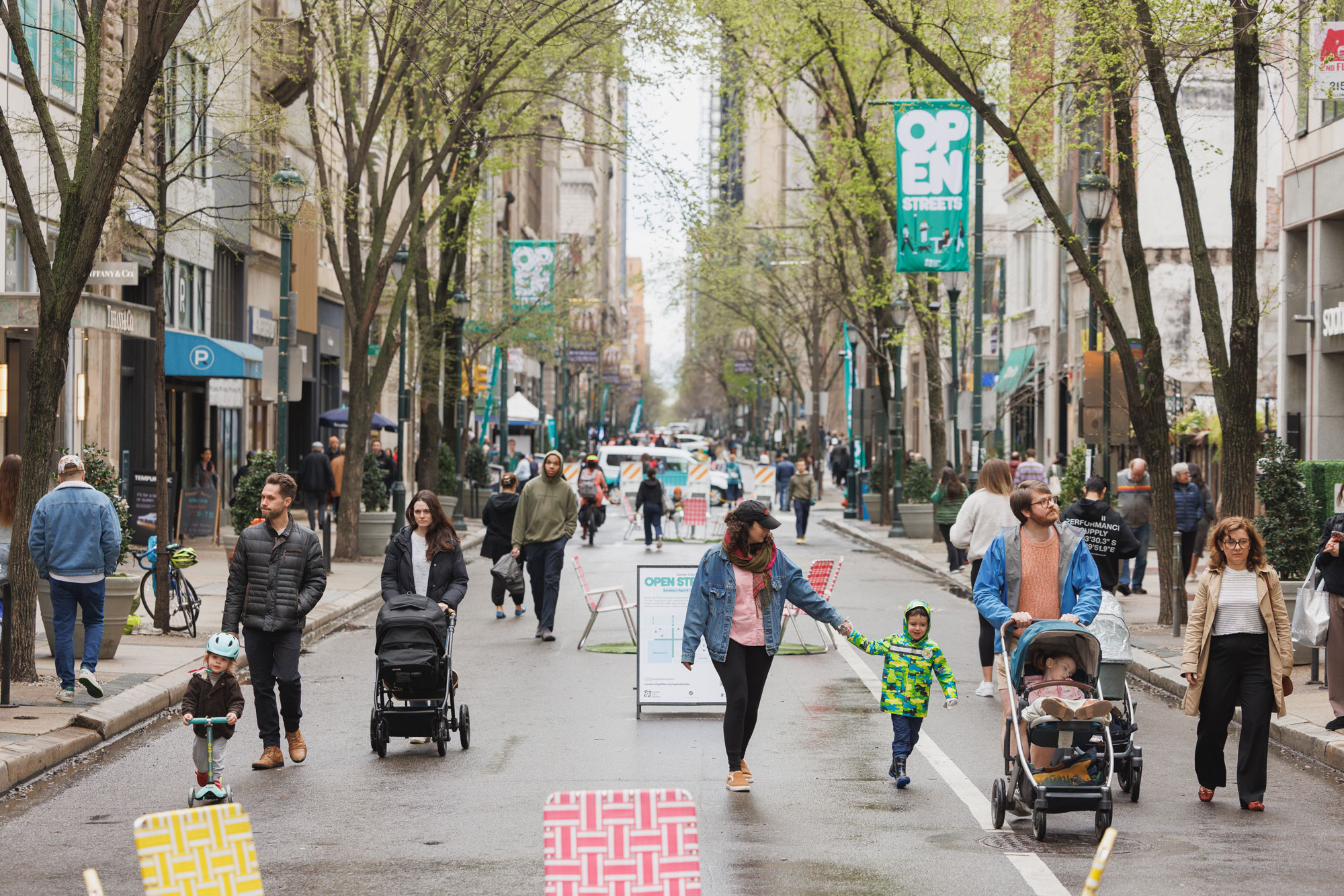
Another option is the retractable bollard, a traffic barrier that could retract below the street when not in use. Paying for such barriers is feasible for an organization like Center City District, but if the initiative expands to other neighborhoods, safety and cost will be top concerns.
“We’ve already floated the ideas of bollards for certain streets and really hope that we can get there in the future,” Landau said. “And as we’re looking forward to 2026, these (Open Streets initiatives) are instrumental in making sure our city works for both locals and tourists.”
Flexible future
The concept of a flexible street has been garnering fans. Luo, who said the phenomenon could coincide with the proliferation of autonomous vehicles, added that the move includes three aspects: flexible road materials, flexible right-of-way and flexible systems.
“What’s the potential to use the street efficiently, not only for the transportation, but also for the social and ecological benefits?” he asked. “(We should be) exploring systems that can monitor and predict maximum efficient usage for the street itself.”
Luo also argued that as thoroughfares experiment with pilot programs or trial-and-error periods, having an established business or restaurant can be a big draw for many people.
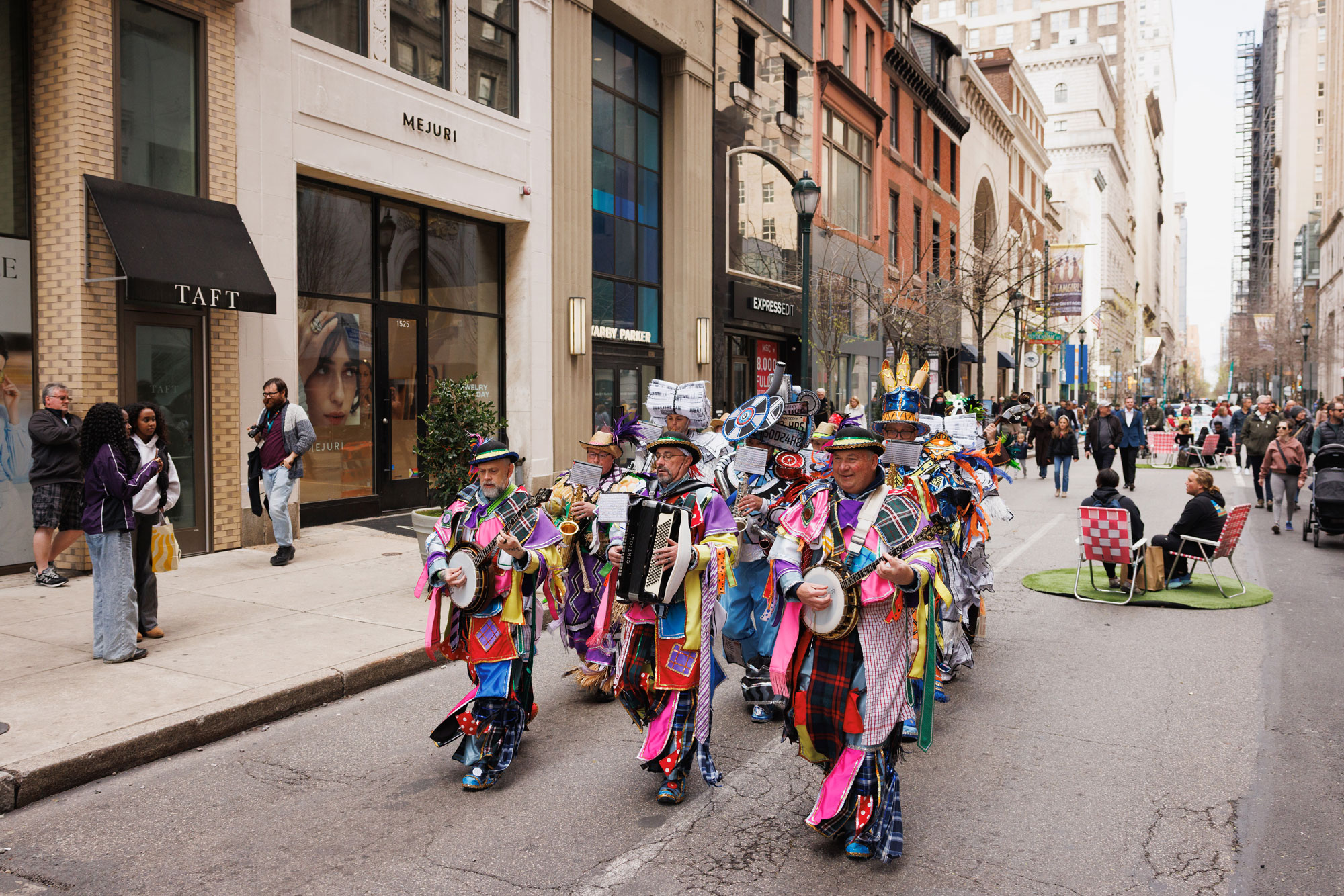
“(Successful) street closures are always because there will be one or two street anchors, either a restaurant or a beer garden,” he said, laying out a strategy for moving forward. “Define those potential street anchors, and then push to have a whole map of that (to see) what street is better to close down and what time it can be better to close down.”
Gupta, who said an “18-hour downtown” would make more sense than a permanent street closure, agreed that retractable barriers can create a safer street for children.
“My kids aren’t afraid of strangers – my kids are afraid of cars,” Gupta told City & State. “If you design a city for 8-year-olds and for 80-year-olds, it works for everyone.”
NEXT STORY: Rural hospitals brace for Medicaid cuts
